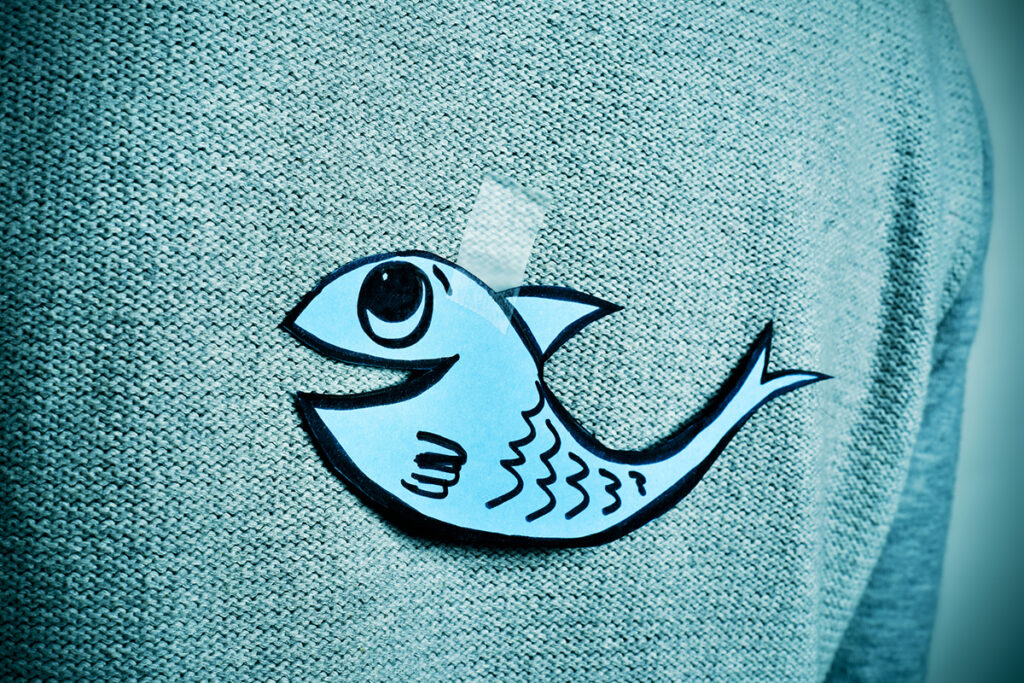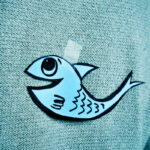Are you ready to learn more about the fascinating world of April Fools’ Day?
We have gathered some intriguing facts and stories about this playful holiday that’s been celebrated for centuries.
From its mysterious origins to its popularity around the world, April Fools’ Day has captivated people’s imaginations and sparked laughter and pranks throughout history.
With divided opinions on the humor of pranks and unforgettable hoaxes that have fooled millions, this holiday has certainly made its mark.
1. Facts About the Origins of April Fools’ Day
One interesting fact about the origins of April Fools’ Day is that it can be traced back to France in the 16th century. The Middle Ages saw New Year’s Day celebrated on March 25 in most European towns. However, in 1564, France adopted the Gregorian calendar, moving New Year’s Day to January 1.
Some people were slow to get the news and continued to celebrate New Year in March. Those who adopted the new calendar played tricks on the ‘fools’ still celebrating in March, giving birth to the tradition of April Fools’ Day pranks in France.
This unique historical event showcases the creativity and playfulness of the French people, making April Fools’ Day an interesting and entertaining holiday.
2. Ancient Roman Festival Influences
The ancient Roman festival known as Hilaria, celebrated after the vernal equinox, had a significant impact on the development of April Fools’ Day. During Hilaria, people would don disguises and engage in masquerades, symbolizing the end of winter and the arrival of a new season. Games and amusements were allowed during this festive occasion, which laid the foundation for the playful nature of April Fools’ Day.
Additionally, the association between April 1 and foolishness can be traced back to Geoffrey Chaucer’s famous work, The Canterbury Tales. This celebration of merriment and deception continues to be influenced by the ancient Roman festival, making April Fools’ Day a time for lighthearted pranks and laughter.
3. Different Names for April Fools’ Day Around the World
Discover the various names for April Fools’ Day across the globe.
In France, it’s known as ‘Poissons d’Avril’ or ‘April Fish.’ This tradition dates back to French poet Eloy d’Amerval in 1508, who associated April with gullibility, as young fish are easily caught. The custom involves attaching a paper fish to someone’s back without their notice.
Similar traditions exist in Italy, Belgium, and Switzerland.
In Scotland and Britain, it was called ‘Huntigowk Day’ or ‘Hunt the Gowk.’ ‘Gowk’ means a foolish person in Scots. This two-day event involves phony errands and pranks, such as pinning fake tails or ‘kick me’ signs.
A similar tradition called ‘Tail-Pipe Day’ exists in Devon.
Across the world, April Fools’ Day is celebrated with unique names and customs.
4. Theories on the Holiday’s Beginnings
There are several theories regarding the origins of April Fools’ Day.
One theory suggests that it originated from the ancient Roman festival of Hilaria, which was celebrated after the vernal equinox and involved disguises and masquerades.
Another theory links the holiday to Geoffrey Chaucer’s narrative in The Canterbury Tales, where April 1 is associated with foolishness.
In the 16th century, France adopted the Gregorian calendar, moving New Year’s Day to January 1. However, some people were slow to get the news and continued to celebrate in March.
Those who adopted the new calendar played tricks on the ‘fools’ still celebrating in March, possibly giving rise to April Fools’ Day pranks in France.
These theories provide intriguing explanations for the origins of this playful holiday.
5. The Role of the Media in Popularizing Pranks
You played a significant role in popularizing pranks by the media. Through various forms of communication, such as television, radio, and the internet, the media has helped spread the idea of April Fools’ Day pranks to a wide audience.
By featuring elaborate and creative pranks, the media has made April 1st a day of excitement and anticipation for many people. News outlets have even joined in on the fun by reporting on outrageous and humorous stories that turn out to be pranks.
The media’s coverage of April Fools’ Day hasn’t only increased awareness of the holiday but also inspired individuals to come up with their own pranks, making it a day of shared laughter and amusement.
6. Famous April Fools’ Day Hoaxes
One of the most well-known April Fools’ Day hoaxes is the BBC’s fake documentary about flying penguins. In 2008, the BBC aired a seemingly legitimate documentary that claimed penguins had evolved the ability to fly. Millions of people believed the hoax, as the BBC is known for its trusted nature documentaries.
However, it was later revealed that the entire documentary was an elaborate prank. This hoax highlights the power of media influence and the gullibility of the public. The fact that such a reputable source could deceive so many people demonstrates the potential impact of April Fools’ Day pranks.
It serves as a reminder to approach information critically, even from seemingly trustworthy sources.
7. The Longest-Running April Fools’ Day Joke
For over 60 years, people have been falling for the same April Fools’ Day joke. It all started in 1957 when the BBC aired a segment about spaghetti trees. The segment showed footage of people harvesting spaghetti from trees, and viewers were captivated. Many believed that spaghetti actually grew on trees and flooded the BBC with requests to purchase these trees. Little did they know, it was all a hoax.
The next day, the BBC revealed that it was an April Fools’ Day prank. This prank has become the longest-running April Fools’ Day joke, fooling people year after year. It serves as a reminder of the gullibility of the public and the power of a well-executed prank.
8. April Fools’ Day Pranks Gone Wrong
Pranks gone awry on April Fools’ Day have often led to unintended consequences. One notable incident occurred in 2008 when a popular newspaper published a story about a Jafr alien invasion. The article claimed that UFOs had landed nearby, causing panic in a town. Parents refused to send their children to school, and the town prepared for an evacuation.
It wasn’t until later that the prank was revealed, but by then, the damage had been done. This incident serves as a reminder of the potential consequences of pranks that go too far. While April Fools’ Day is meant to be lighthearted and fun, it’s essential to consider the impact of our actions and ensure that everyone involved can laugh it off in the end.
9. The Impact of Technology on Modern Pranks
With the advancement of technology, modern pranks have taken on a whole new level of creativity and mischief. The impact of technology on April Fools’ Day pranks is undeniable.
Social media platforms have become the perfect stage for elaborate hoaxes and practical jokes. From fake celebrity announcements to viral videos, technology has given pranksters the ability to reach a wide audience instantly.
Additionally, the rise of digital editing tools and photo manipulation software has made it easier than ever to create convincing fake images and videos. These technological advancements have made modern pranks more immersive and believable, blurring the line between reality and fiction.
As technology continues to evolve, so too will the pranks that we play on April Fools’ Day.
10. Facts About April Fools’ Day in Popular Culture
One interesting fact about April Fools’ Day in popular culture is that many people eagerly anticipate the arrival of this playful holiday. It has become a tradition for individuals, companies, and even media outlets to come up with creative pranks and hoaxes on April 1st. People look forward to seeing what outrageous and humorous tricks will be played.
In popular culture, April Fools’ Day has become a time for laughter, practical jokes, and light-hearted mischief. It’s a day where people can let loose and embrace their playful side. From fake news stories to hilarious social media pranks, April Fools’ Day has become a celebration of humor and creativity, making it a highly anticipated event in popular culture.
11. Unusual Traditions Observed on April Fools’ Day
As you continue exploring the fascinating world of April Fools’ Day, let’s look into the realm of unusual traditions observed on this playful holiday.
One unusual tradition is observed in France, where April Fools’ Day is known as ‘Poissons d’Avril’ or ‘April Fish’. This tradition dates back to 1508 and involves the custom of attaching a paper fish to someone’s back without their notice. The fish is a symbol of gullibility, as young fish in April are easily caught. Similar traditions exist in Italy, Belgium, and Switzerland.
In Scotland and Britain, April Fools’ Day is called ‘Huntigowk Day’ or ‘Hunt the Gowk’. It’s a two-day event involving phony errands and pranks like pinning fake tails or ‘kick me’ signs.
These unusual traditions add to the playful and mischievous spirit of April Fools’ Day.
12. The Psychology Behind Pranks and Laughter
The psychology behind pranks and laughter are both complex and interesting. Pranks have been a part of human culture for centuries, and understanding why we enjoy them can provide insight into our psychological makeup.
Laughter, which often accompanies pranks, is a powerful social bonding tool. When we laugh, our brains release endorphins, creating a sense of pleasure and connection.
Pranks also allow us to let go of our inhibitions and embrace a sense of playfulness. They provide a temporary break from the seriousness of everyday life and allow us to experience a moment of surprise and amusement.
Additionally, pranks can serve as a way to assert power or gain attention, although it’s important to ensure that pranks are harmless and enjoyable for all parties involved.
13. Facts About April Fools’ Day in the Corporate World
In the corporate world, April Fools’ Day holds its own set of interesting facts and traditions. Many companies embrace the opportunity to inject some humor into the workplace and engage their employees. Some companies, like Google, are known for their elaborate pranks and hoaxes on this day.
For example, in 2016, Google introduced ‘Google Cardboard Plastic,’ a faux product that claimed to bring virtual reality to the real world. Other companies use April Fools’ Day as a chance to launch new products or campaigns in a playful way.
However, it’s important for companies to strike a balance and ensure that pranks are harmless and don’t disrupt the work environment. Ultimately, April Fools’ Day in the corporate world is a chance for companies to showcase their creativity and sense of humor.
14. Historical Events That Coincided With April Fools’ Day
Throughout history, numerous historical events have occurred on April Fools’ Day, adding an intriguing layer of coincidence to the holiday.
One notable event took place in 1700, when English pranksters spread the false news that the country was experiencing a lion escape from the Tower of London. People were terrified and fled in panic, only to realize later that it was all a hoax.
Another significant event occurred in 1957, when the respected BBC television program aired a segment about spaghetti trees in Switzerland. The segment showed people harvesting spaghetti from trees, leading many viewers to believe it was true.
These historical events demonstrate the power of pranks and how they can captivate and deceive the public on April Fools’ Day.
15. Countries That Have Banned April Fools’ Day Celebrations
Have any countries banned April Fools’ Day celebrations?
While April Fools’ Day is widely celebrated around the world, there are a few countries that have actually banned or restricted the festivities.
For example, in 2018, the government of Myanmar banned the holiday altogether, citing concerns that pranks could potentially cause public panic and disturb the peace.
Additionally, in 2019, the authorities in Saudi Arabia issued a statement warning against engaging in April Fools’ Day pranks, as they’re considered contrary to Islamic teachings and values.
It’s worth noting that these bans are specific to certain countries and don’t reflect a global trend.
16. The Future of April Fools’ Day in the Digital Age
As we look ahead to the future of April Fools’ Day in the Digital Age, let’s consider how technology has transformed the way pranks are executed and experienced.
With the rise of social media and digital platforms, April Fools’ pranks have become more widespread and accessible. People can now easily share their pranks with a global audience, making it easier to fool a larger number of people.
Additionally, technology has allowed for more elaborate and sophisticated pranks, such as creating realistic fake news articles or using deepfake technology to create convincing videos.
However, in the digital age, it’s also important to be mindful of the potential negative consequences of pranks, such as spreading misinformation or causing harm to individuals or communities.
As technology continues to advance, the future of April Fools’ Day will likely see more innovative and creative pranks, but it will also require responsible and ethical pranking in the digital space.





